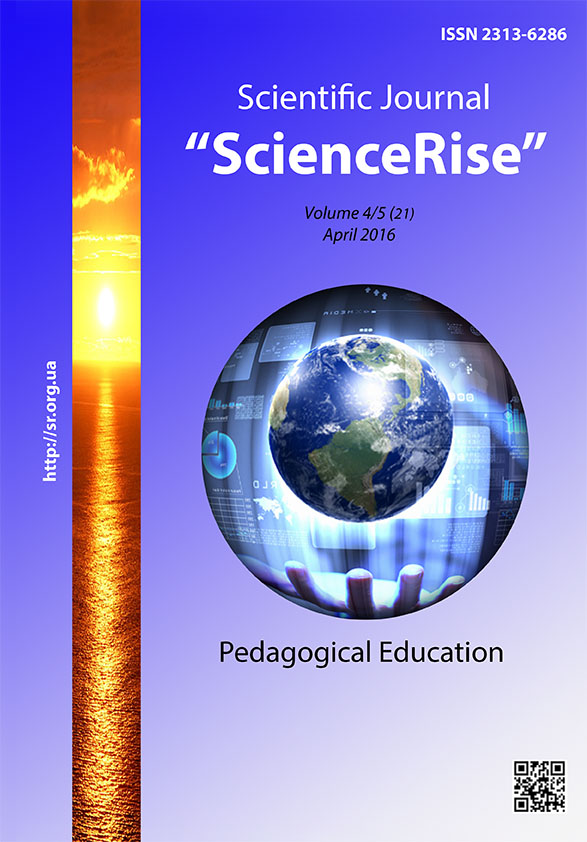Computer-based controlon mathematical education of the future engineers
DOI:
https://doi.org/10.15587/2313-8416.2016.66344Keywords:
computer-based control, mathematical education, management, internet-resource, e-school-books, future engineersAbstract
There was offered the computer-based management of the scientific-cognitive activity of the future engineers and organization of control on mathematical education using the attainments of the modern information technologies. There were analyzed the e-school-books elaborated by the higher mathematics teachers of the Donbass state academy of mechanical engineering and Donetsk national technical university. There was grounded an expediency of the use of aforesaid school-books during the lectures or independent students’ work and at the control on education of the future specialists of engineer branch that is considered as the category of management as the relatively independent final element of managerial cycle of educational process. There were offered methodological recommendations of the use of e-educational technologies at mathematical studies. There was elucidated how the introduction of educational materials from internet-resource with the access mode http://vmdbi.net.ua/ favors the computer-based control on education: oral questioning of students, written control works, tests and so on. There was proved that the use of offered means at the control on mathematical education gives the possibility to establish the reverse connection at studying mathematics and comprehensively examine the level of knowledge and skills of the studied discipline in students
References
Yevseyeva, O. G. (2012). Design methodical system of teaching mathematics technical university students based on active approach. Didactics of mathematics: problems and research. Doneck: Vyd-vo DonNU, 37, 7–16.
Krylova, T. V. (1998). Problems of teaching mathematics at the Technical Universities. Kyiv: Vyshha shk., 438.
Losev, N. M., Mudranova, J. A., Gubar, D. E. (2013). Using interactive controls in teaching analytical geometry. Current Issues of natural and mathematical education. Sumy: VVP Mrija, 1, 150–158.
Vitvytska, S. S. (2003). Fundamentals of Pedagogy of high school teaching aid for students of Master. Kyiv: Center of educational literature, 316.
Garkih, Y. S., Lysochenko, S. V., Sus, B. B., Tretyak, O. V. (2012). Computer technologies in education. Kyiv: Kyi'vs'kyj universytet, 239.
Vlasenko, K. V. (2010). Higher Mathematics: elements of linear and vector algebra. Kramatorsk: DDMA.
Vlasenko, K. V. (2014). Practical exercises on probability theory and mathematical statistics. Kramatorsk: DDMA.
Yevseyeva, O. G., Vlasenko, K. V. (2014). Workstations mathematics teacher: Computer-oriented system. Doneck: DonNTU.
Vlasenko, K. V. Electronic Textbooks. Available at: http://vmdbi.net.ua/
Kademiya, M., Sysoieva, A. (2012). Interactive learning tools. Vinnycja: PLANER, 217.
Vlasenko, K., I. Reutova, I., Luparenko, O. (2013). Workbook higher mathematics for future engineers. Elements of linear and vector algebra. Doneck: Noulidzh, 124.
Vlasenko, K., I. Reutova, I., Luparenko, O. (2013). Workbook higher mathematics for future engineers. Introduction to Mathematical Analysis. Doneck: Noulidzh,128.
Vlasenko, K., I. Reutova, I., Luparenko, O. (2013). Workbook higher mathematics for future engineers. Analytic Geometry. Doneck: Noulidzh, 176.
Downloads
Published
Issue
Section
License
Copyright (c) 2016 Катерина Володимирівна Власенко, Наталія Сергіївна Грудкіна, Наталія Володимирівна Новікова

This work is licensed under a Creative Commons Attribution 4.0 International License.
Our journal abides by the Creative Commons CC BY copyright rights and permissions for open access journals.
Authors, who are published in this journal, agree to the following conditions:
1. The authors reserve the right to authorship of the work and pass the first publication right of this work to the journal under the terms of a Creative Commons CC BY, which allows others to freely distribute the published research with the obligatory reference to the authors of the original work and the first publication of the work in this journal.
2. The authors have the right to conclude separate supplement agreements that relate to non-exclusive work distribution in the form in which it has been published by the journal (for example, to upload the work to the online storage of the journal or publish it as part of a monograph), provided that the reference to the first publication of the work in this journal is included.

